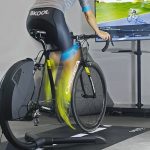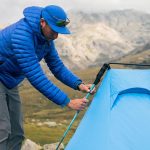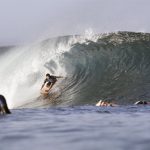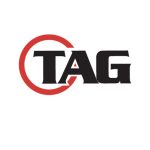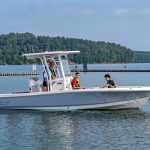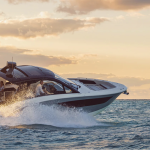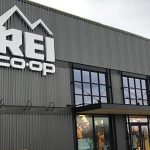With frighteningly warm weather impacting the entire east coast and a very late start to the season in California, SIA.07 could have been a depressing event, but the market in attendance appeared to shrug off the issue and drive pretty positive energy on the floor. Vendors, one after another, expressed their surprise at the up-beat nature of their dealers, especially at the buying shows preceding SIA. This is not to say that business is good in the east. The lack of snow certainly impacted retailers, but responsible inventory management last year is leading to less financial difficulty this year for many retailers.
According to most accounts on the floor, going into the 2006-07 season, many retailers had extremely lean inventories, and they ordered low during the pre-season. So, they are not hurting as much as they could be had they ordered heavily. Yes, sales in the east will be down this year unless we see a considerable increase in snowfall before Presidents Day weekend, but there will not be a glut of inventory sitting at retail when the lifts close for the season.
Regardless of the situation at retail, SIA.07 appeared to be one of the healthiest shows since the organization launched the “See it, Try it, Buy it” concept. The ski side of the show floor showed more life than ever, and the snowboard side was conducting business as unusual despite the timing of the ASR show. Both factors contributed to a healthy balance of fun and work that most attendees in the aisles seemed to appreciate.
There were several key trends impacting the ski hardgoods market this year and for the first time in years there was some real innovation on the floor that will undoubtedly have the industry, and the consumer, talking throughout the season. Perhaps the most prevalent trend in ski hardgoods was the introduction of at least three new ski lines from snowboard companies. In addition, traditional ski brands are slowly learning how to talk to the youth market through park & pipe and freeride products, and the corresponding marketing messages. The main area of innovation this year was in bindings specifically backcountry bindings.
Rottefella made the telemark world happy with the much anticipated launch of the New Telemark Norm binding boot system. The system allows step-in, releasable telemark performance for the first time.
Rottefella worked closely with two boot companies, Scarpa and Crispi, for over eight years to develop this system. It required a complete re-design of the boot and binding platform, making the binding stiffer and the boot softer in the toe-flex area. In addition, the new system offers the advantage of not using the old 75mm duck-bill toe, making the boots compatible with many alpine touring bindings. Backcountry skiers who use both AT and telemark set-ups, depending on their mood or the conditions, can own one pair of boots for both sports. At the same time, the boots are much more crampon friendly for ski mountaineers.
Movement Skis was creating quite a buzz on the show floor due to their premium backcountry and freeride skis. The Swiss company is eight years old, but this is only its second year in the U.S. and fifth year in Canada. The company uses rather exotic woods in the cores of its skis, which it buys off of a tree farm that specializes in high-end sailing decks. The different species of tree are matched up with the end-users needs for flex, weight, and stability, so the company is relying on the natural properties of the wood to make its skis behave different. The brand is manufacturing its skis in the old Tua factory, which Movements parent company now owns.
Black Diamond made their official debut at SIA after several years of absence. The company feels that it has been evolving into more of a ski company for the last several years and now with a large portion of its line dedicated to SnowSports it only made sense to show up in Vegas. Black Diamond completely re-designed its ski line with ten new models ranging from a 110 mm under foot fat powder ski to a narrow superlight rando-race ski. Part of the re-design effort included a new factory, with BD moving its production away from Atomics Austrian facility.
Atomic created its own line of U.S. specific skis, which are designed to be “50/50 on/off piste.” This is a first for the Austrian company, which has traditionally pushed the same makes and models it sells in Europe into the U.S. market, possibly with some different graphics. Dubbed the “Nomad,” the new line is a western-inspired ski that is only 79mm under foot, but offers easier turn initiation and better flotation in deeper powder. Paired with the Nomad is Atomics new Hawx boot line, which offers a slight forward flex to allow skiers to shift their weight onto their natural balance point, the ball of the foot.
Heads business increased nearly 14% in the U.S. market according to the companys North American management team. The brand is seeing the market fragment into a wide variety of small niches with demand strongest in womens-specific product followed by fat powder and freeride skis; although, high performance slalom-style skis with extremely tight turning radii are also selling through well on the east coast, if there is snow. The company is one of the few hardgoods manufacturers with more SKUs this year, while many other brands have cut their product lines due to consolidation and brand segmentation. Head also launched its first true backcountry ski set-up for skins.
Salomon is preparing to move its headquarters to Utah sometime in June or July, with much of the current Oregon-based team deciding to remain behind. However, at the same time, the company has made arrangements for a significant number of the people who do not move to stay on-board in Oregon to ensure a smooth transition to Ogden. The new Utah team will be considerably smaller than what Salomon is operating with currently, especially in marketing. The U.S. subsidiary will be relying on “turn-key” marketing materials from France, where the international headquarters will be located.
Tecnica is also seeing the market fragment into several smaller niche categories, but at the same time the bulk of all skis sold are still in the “all-mountain” category. Backcountry and “Free-Skiing” have reportedly taken the market by storm over the last year and Tecnica has created a free-ski specific four-boot line-up, called the “Agent” line, to cater to this market.
Volkl is launching the Tiger Shark line of skis this year, which are all-mountain carving skis on the narrow side of the mid-fat category. The line uses spring-loaded carbon rods to customize the stiffness of the ski with the flip of a switch.
Marker created two all-new bindings this year, catering to two similar markets. For the park & pipe skier, the Jester offers a 16 DIN setting and park-specific features like low rotational weight to make spins faster and easier. This same binding platform was incorporated into a backcountry AT set-up for the park & pipe skier who wants to take his or her skills into the big mountains. The binding is on the heavy side, but for skiers who are going faster than ever and hitting bigger tricks every year, the 16 DIN setting offers a margin of reliability and safety that no other AT binding on the market can match.
Nordica is offering its most complete collection to date, with its ski and boot line tied together more than ever before. It has several new lines, including the Olympia womens specific line that was re-designed from the ground up; the Supercharger collection with two big mountain skis, two park & pipe skis and a new line of free ride boots; and the GranSport Line with more refined graphics and a more relaxed feel. The company will also be moving much of its ski production into the Blizzard factories now that this business is also under the Tecnica ownership umbrella. Finally, Nordica decided to re-launch the Dolomite brand as a long-margin house brand for specialty retailers. Dolomite will have a small in-house sales force, on-line and computer-based sales training, and very-little in-shop service presence. However, the brand will offer retailers up to 70 points of margin.
K2 has been busy with its integration of Karhu, Madshus, and LINE skis into the existing supply chain, but the benefits of K2s resources were immediately apparent at all three brands at the show. Without the worry of late deliveries, warehousing and shipping, LINEs Jason Levinthol and Karhus Charlie Lozner are now free to work on brand building, which is practically second nature to Levinthol, who was one of the founding members of the free-ski movement. With Madshus, K2 is able to leverage some of the technology and talent from the in-line skate division and create some innovative XC ski technology, especially in the boot category.
This year, K2 will also be going into some lower price-point ski poles to compete directly with Scott. The company has also brought on-board a full-time helmet product manager and engineer to add some new technology to that category. While K2 has been one of the primary instigators in vendor consolidation, it has only completed some small deals recently, and will likely be looking for some summer business to balance out the seasonality of the heavily-weighted wintersports division.
Rossignol has expanded and simplified its Mutix line of customizable carve skis. Last year, this was one of the only real innovations in hardgoods, with interchangeable carbon arms to change the turning radius of the ski, depending on the skiers mood or conditions. This year, that technology has moved across into new mens and womens models that are easier to interchange arms, with a click & go system that requires no tools. The company has also moved to injection molded boot liners for 3-D seamless liners that are more comfortable and perform better.
On the snowboard side of the show there were more skis than ever. Black Skis was launched this year by Sapient snowboards parent company AMS. The brand is a low-price, high performance line of freeride skis and was described as “our response to ski companies making cheap snowboards.” The line starts at $70 wholesale and tops out at $400 wholesale and comes with or without a pair of VIST bindings. According to the brands management, the whole point of the brand is to disrupt the price structure in the ski industry and “get a whole lot of people upset.”
Thule is pursuing customizable graphics with a broad partnership with Original Wraps, a company specializing in custom, self apply, vinyl stickers. The stickers cover nearly any Thule product, from top-mount ski racks to full sized boxes. In addition, Original Wraps is launching its own line of self-apply water bottle topo-map stickers.
Yakima is also allowing users to personalize their racks with their own in-house sticker program and some rather unique bar end-caps, including a “Live Strong” end-cap that will be launched in July. The company has extended its new design aesthetic throughout its bike and SnowSports line and its next step will be boats.
Palmer is transitioning from a snowboard company to an all-around SnowSports hardgoods company with a line of park & pipe skis and a line of all around carve skis that should “appeal to 90% of the skiers on the mountain.” This is truly a first for a snowboard company and will be an interesting story to follow as the orders come in.
Lib Tech was the first snowboard company to launch a ski line last year; although the brand refused to admit that Lib Tech made skis at all calling them Narrow Ass Snowboards. This year, the company launched its first line of skis that they actually call skis, the RoboSki, made in Rossignols Spanish factory, which is almost fully automated by robots.
Leki created a new glove-pole interface, similar to its existing XC ski interface. The major difference is that this new system is designed for alpine and telemark skiers and it has a spring loaded release mechanism that drops the pole in the event of an unanticipated snare. The interface comes with a harness that allows it to be used with any glove, but Leki is also producing its own line of gloves with the system already built-in.
Giro is pulling out its best selling helmet, the Nine, and replacing it with the G9, which has updated styling and a new fit system. The company is also ramping up its signature series across the board with more sponsored athletes and more signature artwork. However, the big news out of Giro was the line extension into eyewear with a series of four goggles set for delivery in December or January of 07-08 and a line of sport sunglasses currently under development.
Spy Optics is going retro, not only with its styling but also with its manufacturing with a new “handmade series” coming out of Japan. The styling is reminiscent of 60s and 70s era glacier glasses, while the handmade quality and attention to detail will be evident to any eyewear aficionado.
Oakley is relying on its proprietary technology, new signature series designs, and slight tweaks to graphics in its goggle line, while it showed some real flair for fashion in its new womens line of sport-lifestyle sunglasses. The new Disobey, Behave, and Speechless all caught eyes wandering through the Oakley booth with new silhouettes for Oakley highlighted by some truly unique patterns.
One development of note was that HART skis are back after an eight-year hiatus. Re-launched by the founders grandson, Bill Holmberg, the company is starting small, with a line of non-system skis. However the management team was picked from many industry giants like Atomic and Tecnica.
Smith is also going retro with its styling and creating a new six model line-up of wire framed sport-lifestyle sunglasses that will appeal to a younger demographic. In goggles the company is launching an interchangeable lens model that will be delivered to retailers in November of 07. Many of Smiths other models are using new liquid emersion graphics to create more dramatic designs and brighter, more vivid contrasts. On the business side, the company feels that the changes it made three years ago are now beginning to bear fruit, with increased sales and a more reliable supply chain. In fact, roughly 90% of the models on display in the booth were available for immediate delivery.
While many hardgoods vendors looked to cross-pollinate into skis or snowboards, most apparel companies at SIA were purely focused on fashion and style as their point of differentiation. Much of this is due to the lack of any visible technical performance innovation in fabrics and construction. While it is true that some companies are making waterproof breathable fabrics that are lighter, or breath slightly better than before, to the consumer this usually translates to more confusing numbers rather than a tangible feature-benefit.
In spite of the lack of performance innovation, many apparel companies are using new waterproof breathable hard-shell and softshell fabrications to create interesting new styles and designs that talk to the consumer much more effectively than any list of technical specifications.
By using new treatments and technologies, many apparel companies are using interesting texture-on-texture patterns to highlight the narrower silhouettes that are currently en vogue. Several companies have finally cracked the denim code and are now able to create truly technical waterproof breathable ski and snowboard pants that look like designer jeans. One outfit by Burton, could easily be mistaken as street wear, until you notice the built-in snowboard boot gaitor and Gore-Tex logo on the designer jeans and the fact that the plaid shirt is actually a waterproof breathable shell.
The overall color palette at SIA this year was much more muted than the over-the-top neons we saw last year. Spicier earth tones were prevalent, paired with some very bright whites and brighter, more colorful accents. Pink was definitely back in the color line-up this year, as was fur, after a one year hiatus. In fact, after trying to re-launch the faux-fur look into the mens market (and failing) two years ago, the industry seems to be ready to give it a try again.
The trend towards narrower silhouettes maintained itself this year without much change since last year. The only real difference was that more snowboard companies are now offering a narrow option to many styles in their line for the more modern, fashion forward boarder. This is not to say the big, baggy look has disappeared it is still alive and strong among much of the snowboard community.
Bonfire now claims to be the “solid” number two snowboard apparel brand behind Burton, and even out-sold Burton in pants this year. Judging by the non-stop traffic in the Bonfire booth, this could be very close to the truth. Unlike the non-stop party atmosphere of some of the snowboard brands, Bonfire had line presentations going non-stop and actually managed to get some business done at the show.
Burtons already huge apparel line grew even more this year, but the brand certainly did not disappoint, with more fashion forward styles driven by some interesting innovations. The formal look that was introduced last year – and driven by Shaun White – continued in Burtons line this year with some interesting refinements. Pinstripes complimented with faux French shirt cuffs and real suit-vests were paired with matching pants. In other lines, Burton used striped herringbone waterproof-breathable materials, faux vinyl, or Gore-Tex denim to make technical outerwear look nearly identical to street wear. There were several cases where it was difficult to discern Burtons new spring-summer lifestyle line form the technical winter outerwear.
The company continued its “B” by Burton line for more fashion forward women with a distinctly academic, almost preppy, feel to many of the items. The brand also launched a line of womens handbags this year.
The final interesting development is Burtons collaboration with the estate of Andy Warhol to create a Warhol signature line of SnowSports apparel and hardgoods. This line will offer a series of boards, a boot, a binding, a line of outerwear for men and women, and a line of bags.
Holden is going into its fifth year and was the second most progressive company on the floor when it comes to environmentally conscious design, with the first being Patagonia. While the Outdoor industry has wholeheartedly accepted the eco-friendly call to action, the message was surprisingly absent from the marketing on the SIA show floor, in spite of SIAs attention and efforts to offset the tradeshows energy use with renewable energy. Holden is using cleaner lines and interesting texture details to highlight its design details, while at the same time it is cooperating with Teijin on its recyclable outerwear program. The brand has also developed a Hemp/PET blend with an eco-friendly waterproof-breathable laminate to reduce the footprint of a large portion of its outerwear.
Helly Hansen was the subject of the largest apparel deal in the industry last year when it was bought by a Scandinavian private equity firm. In spite of the change in ownership, Helly is maintaining its course, partially because management were the ones to initiate the deal process, actively asking their former owners to sell the brand. The only major change to have occurred was to split the company into two groups, Sport and Work/Survival. The company has already consolidated its design center into one facility in Scandinavia and will now be able to provide a globally consistent marketing message. The retail expansion that the company saw from 2004-2006 has leveled off now that management feels the brand has sufficient penetration in the U.S.
Orage continued to push the boundaries of style in the free ski, park & pipe markets with new pieces in each of the brands three major collections. The fashion-forward Gallery collection turned heads with a decidedly Native American influence in the Niabi Jacket and some interesting and very technical fabrications. The Masters collection used texture-on-texture patterns along with faux fur and faux suede in several pieces, while the Riders Edge collection added interesting textures to the highest performance pieces for a hint of style, even if you are skinning for your turns.
Eider, a French technical ski apparel company inked a 10-year licensing agreement with Killy in August to design and produce this brand as a more fashion-forward ski apparel brand. The design team at Eider only had four months to design and produce the entire line, but they managed to pull it off. The line will be sold only to high-end ski boutiques and will sell at retail at $600-$800 price points. The companys plan is to increase revenues by 20% over the previous licensee. Going forward, Killy will have a different sales, marketing, and design team.
Killys former licensee went on to create its own brand, E+O. The brand is positioned on the higher end of the price scale, but not the absolute top-end prices will range from $499-$649. The line is divided into several different subcategories, like Steep + deep for more technical customers; Ab + Fab for more fashion-oriented customers; and Carve + Glide for front-side resort skiers.
One of the more interesting brands to return to the SIA show floor was Powderhorn. After several years of dormancy, the brand that originally introduced the leather-yolked puffy down vest is back with a considerable amount of talent brought in from around the Jackson, Wyo. area, including several folks from Cloudveil. The brand is being re-launched as a pure ski company with a decidedly retro look and feel. Powderhorn is looking to open roughly 100 doors in this first season, and was well on its way by the time the show ended.
Obermeyer will be celebrating its 60th anniversary over the course of the next year and has created two signature pieces a limited edition pants and jacket for women, both with “Clothing from the Heart of the Mountain” prominently embroidered on them. The company has also launched a new Juniors line for the 13-20 age group. Obermeyers logo was re-worked to emphasize the “ME” in ober-ME-yer to reflect the lines appeal to the “ME” generation.
ArcTeryx has shifted their entire line over to the new Gore-Tex pro-shell and is pleased with the results. The new material allowed the brand to re-create its Gore line-up with narrower seam-tape, and lighter, more supple fabrics. In addition, the company has begun using Polyester in many of the reinforced areas of the shells due to its hydrophobic nature.
Hot Chillys has spent the last 20 years building its business by working closely with the retailer and has been able to gain a 30% market share in the specialty ski shop base layer business without running a single consumer ad. The company is continuing along with this strategy, but it has re-worked its discount program to be more “specialty-friendly.” The program gives smaller shops that carry a broader selection, but may not go as deep in a single item, more of an opportunity to get the deeper discounts. The company also re-worked its POP to be more traditional and fit into more shops existing atmospheres. Product-wise, the company is still creating funky, South-of-the-boarder inspired designs.

